What is the Recommended Age to Introduce Kids to Firearms?
Tags:
Spending my entire adult life in a career introducing people to firearms and hunting and teaching the safe and proper use, storage, and handling of fire- arms, one of the most frequently asked questions is, “What is the best age to introduce my kids to firearms?†The answer, without hesitation, is NOW!
As parents, we raise our children to be safe and avoid hazardous situations. Responsible gun owners owe it to their children to teach them the safe and proper use of firearms as early as possible in their development.
Even parents who choose not to have guns in their home, for what- ever reason, should enroll their children in a gun safety course as early as possible. This is especially true if you live in a gun-friendly state such as Texas. It does not matter if you are a responsible gun owner and properly secure your firearms, or if you are a non-gun owner who chooses not to have guns in the house; your children might find themselves at a friend’s house with unsecured firearms at that loca- tion. If you have not properly taught your children about gun safety and the proper use of firearms, a disaster could occur.
As an NRA Training Counselor, I conduct basic and instructor firearm courses every weekend, as well as interact with several new and experienced gun owners at the range where I teach. It is shock- ing how many parents have a firearm in their home and have ignored teaching their children about gun safety and educating them in the proper and safe operations of firearms.
If you own firearms and have young children, it is your obligation to educate them in the safe and proper use of guns. This education should begin as soon as they are able to get a hold of a firearm on their own if your back is turned. In other words, if they are old enough to have an accident with a gun, they are old enough to be taught about firearm safety. Kids start mimicking their parents at a very early age. If we begin their firearm education early, they will become safer at an early age.
Too many parents who own firearms make it a point to simply “hide†their guns from their kids or choose not to show them the proper and safe handling of a firearm, which is in direct contrast to what the mainstream media has successfully demonized. The most important thing to remember is that the act of “hiding†something is not “securing†something! Failing to properly secure a firearm is the reason the majority of accidents occur.
Unlike most items that we purchase at the store, you just cannot bring a firearm home and be careless regarding its handling. It can- not just be set on the counter or table, waiting for you to “get around to it†to put away. The rule of thumb is that if you are not in direct control of a firearm, it should be unloaded and secured so that no unauthorized individual can gain access to it. There is no good reason a firearm should not be secured when it is not in your direct control, especially if children are in the house.
Many parents take the position that they should shield their chil- dren from the knowledge that there is a firearm in the home. This is no different from choosing to tell them to avoid anything in the house that could seriously injure them or cause death. For example, every house has a breaker box or fuse panel, natural gas lines and valves, or drawers with knives or any other sharp object. Parents routinely teach their children to avoid these potentially dangerous locations and items. A firearm should be no different. Exposing children to firearm safety can greatly reduce the chance of having an accident. Unfortunately, these accidents oftentimes end in tragedy.
Parents need to show their children any firearms in the house, so they know what the gun in their living space looks like. After all, they need to know what the rules are in their home. If the rules are “Do not touch,†they need to know what it is they are not to touch! Children are naturally curious. If you tell someone to NOT touch that red button…what is the only thing going through their mind? More than likely, it’s a burning desire to touch that red button! It is important to remove the curiosity associated with firearms.
Several years ago, I started a Boy Scout Co-Ed Venturing Crew that only focuses on the shooting sports and hunting. All the youth members in my Crew are required to attend NRA firearms courses to learn the safe handling, operation, and storage of handguns, shot- guns, and rifles. One day, I was conducting an NRA Pistol Instructor class to a room full of Boy Scout Leaders who were getting trained and certified so they could oversee the ranges during their upcom- ing youth summer camps. There were two 15-year-old girls from my Crew who were also in attendance. I asked the girls to do a little skit after one of the breaks.
As the Boy Scout Leaders were gathering back to class, the girls came to the front and began their demonstration. One of the girls picked up a semi-automatic pistol. The magazine had a few train- ing aid dummy rounds of ammunition loaded, and there was also a dummy round in the chamber to simulate a “loaded gun.†She said to the other girl, “Do you want to see my dad’s gun? It’s OK since my parents are not at home and I know where he hides it.†The other girl responded, “I don’t think we should be messing with that.†She then took the gun from the first girl’s hand and, while keeping it pointed in a safe direction with her finger off the trigger, she removed the source of ammunition, worked the action back and forth, ejecting the dummy round in the chamber, locked the slide back, then visu- ally and physically inspected the chamber. She then placed the gun back on the table in the gun rack.
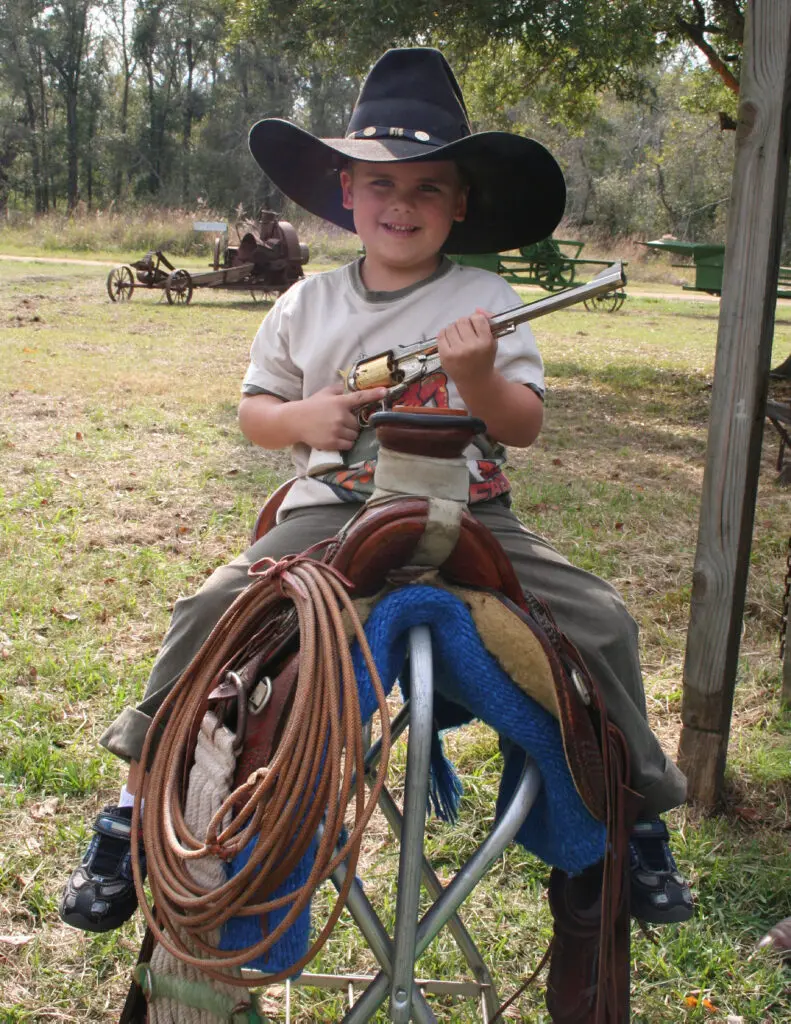
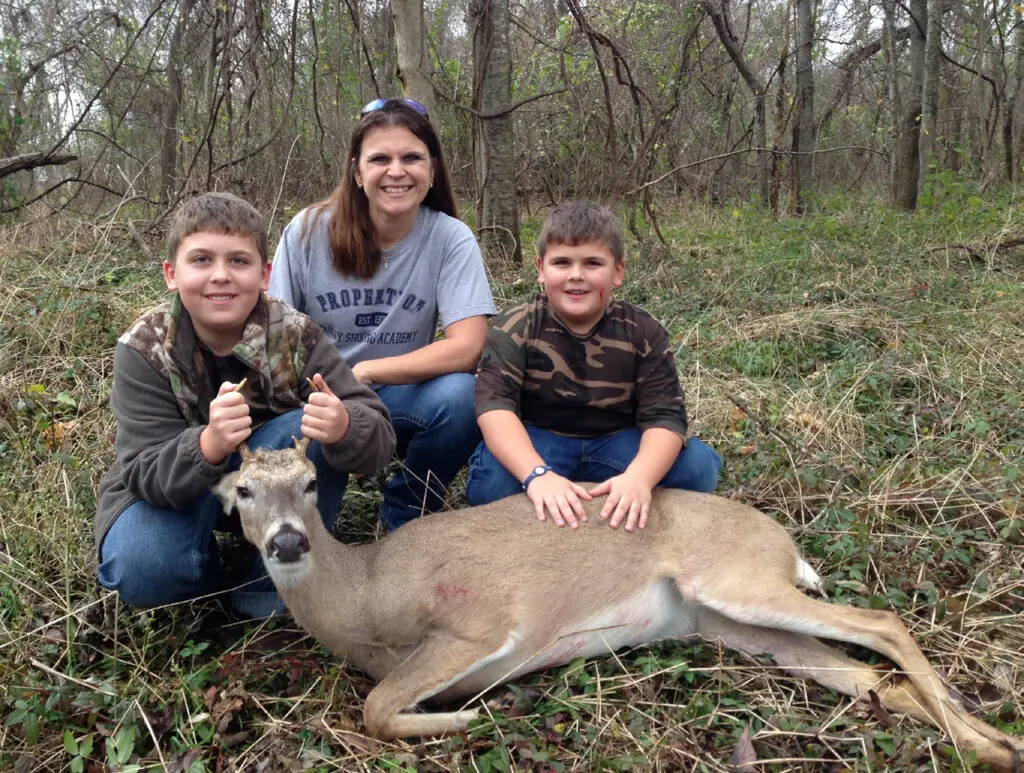
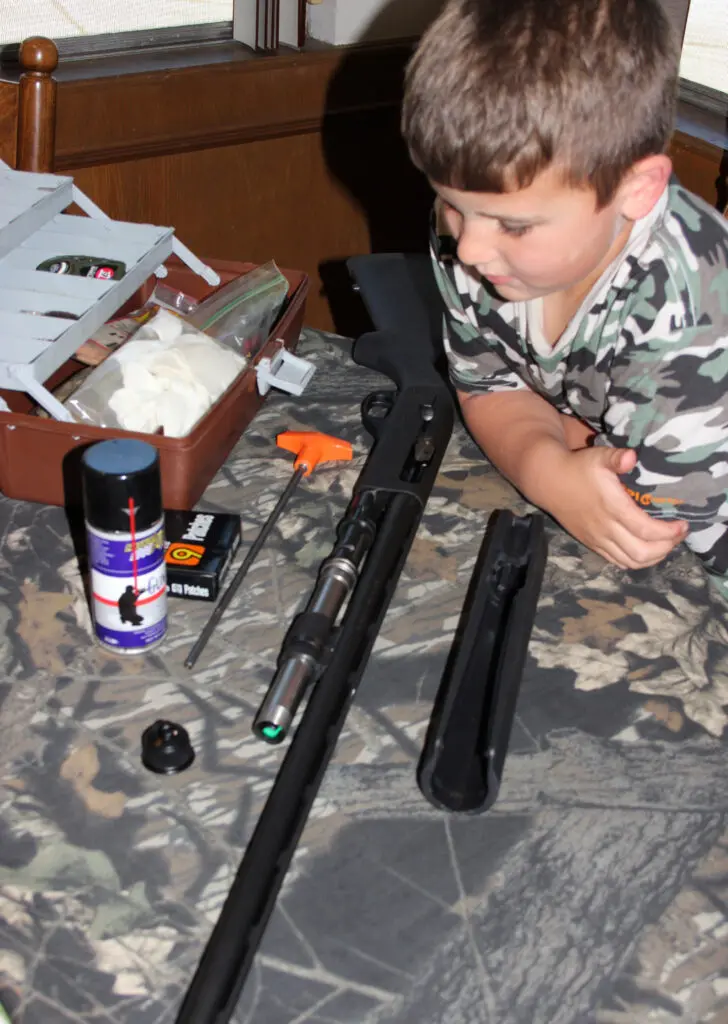

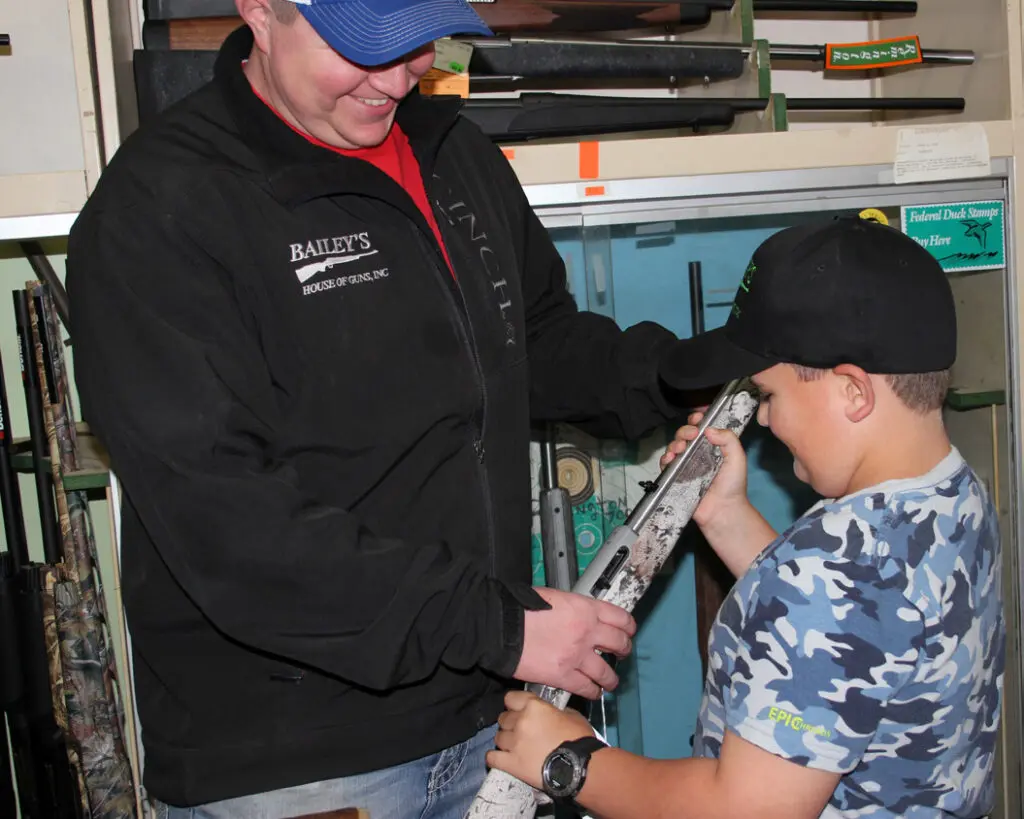
The adults in the room were speechless. I asked how many of them had guns in their homes, and every one of them raised their hand. I then asked them how many of their own kids could do that, and the scout leaders sat quietly. Not one of them raised their hand. I told them that, sadly, their situation was a potential tragedy just waiting to happen, and they had some work to do when they got back home. When you start teaching your children about gun safety and the proper use of firearms, it all depends on their development. There are five stages of child development. These are newborn (1-2 months), infant (3-12 months), toddler (1-3 years), preschool (3-5 years), and school age (6-17 years). It is the last three stages that we need to be concerned with – toddler, preschool, and school age. This is when parents need to start teaching their children the safe and proper use
of firearms.
TODDLER
During the toddler stage is when we start setting boundaries for our children. This is the stage when we begin teaching children what is right and what is wrong. This is also the stage at which we teach children the meaning of the word “No.†It is about associating a word with an object. In this case, the word “no†is related to a potentially dangerous object. We do this to keep them safe.
Most parents remember teaching children not to touch everyday items in their homes that could injure them. We treat these items like responsible gun owners should treat their firearms. We secure these potentially dangerous items so our children cannot get to them, such as adding covers and plastic plugs to electrical outlets, placing child-proof locks on the knife drawer and on cabinets where we keep our household cleaning chemicals, and, very importantly, locking up our firearms. The difference is that many parents show dangerous household items to their children with a stern, “NO!†so they can associate the item with the word, but they never expose them to any firearm that may be locked up in the house.
In other words, their children never associate firearms with the word “NO†at an early age. Toddlers should be shown any firearm in the house and told “NO†to start the connection. As an example, before he retired, my husband was a Texas Game Warden. When he came home from work, we showed the kids his gun belt and pointed to his duty gun and gave them a firm “NO!†It did not take long be- fore they would point at his gun when he was leaving or returning home from work and parrot the word “NO!†My boys are a perfect example of being exposed to guns at an early age and learning what “NO†means.
PRESCHOOL
During the preschool stage, between ages 3 and 5, parents start teaching their children simple tasks to do. During this stage, children begin to refine their fine motor skills such as stacking blocks, run- ning, catching a ball, and in today’s world, working a smartphone! This is also the stage when children start communicating with words and full sentences. They can also understand communications from their parents and others.



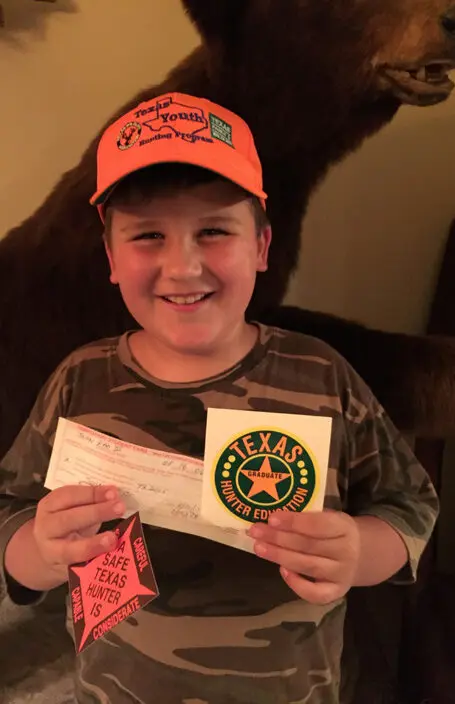
Usually, by the later part of the preschool stage, children can manipulate simple mechanical devices. This is the per- fect time to introduce kids to (unloaded) air guns, the Red Ryder BB gun, and other smaller pellet guns. This is also the time that the basic fundamentals of shooting should be taught. My kids were proficient in lining up the front and rear sights of a firearm, learning what a cheek weld is, and the proper trigger pull by the time they were 5 years old.
SCHOOL AGE
During the school age stage, between the ages of 6 and 17, is when the bulk of learning takes place. This is the time when your children become proficient in hobbies and sports such as football, volleyball, shooting, or any other activity they are interested in. Because there are so many things competing for their attention (girls, boys, cars, etc.), if you’ve failed to introduce them to the shooting sports by this time, your children may not develop the level of interest in shooting that you have.
We introduced our kids to firearms early on. Each of my boys became proficient shooters using larger deer hunting calibers such as .243 Win, 25-06 Rem, and even 30-06 Sprg by the age of 6, and each one took their first deer at 7 years old. We accomplished this with lots of range time and dry fire practice at home. Starting in October, we set up a tripod gun vise in the living room and left it up until mid-March. At age six, when they got home from school, they would sit behind the unloaded rifle and learn how to use a scope by lining up the sights on different targets, and practice their aiming, breathing, holding, trigger pull, and follow- through. It did not take long for the boys to turn this daily practice into a competition. They began stacking quarters on the barrel and seeing who could be the steadiest while squeezing the trigger with the most coins stacked up without knocking them down.
Not only were they working on the 5 Fundamentals of Rifle Shooting (Aiming, Breath Control, Hold Control, Trigger Control, and Follow Through), but they were also working on the most im- portant skill – Safety. Before they could practice each day after school, under our watchful eye, they had to go through the clearing process to ensure that no live rounds were present by opening the action and visually and physically inspecting the chamber and/or the magazine, depending on the gun. These are necessary skills to get in the habit of minimizing the risk of an accidental discharge that could result in serious bodily injury or death. They worked on these skills for years, and as a result, they are some of the safest and best shooters I know.
Firearm safety starts at home. If a parent does their part and be- gins teaching their young ones the importance of firearm safety and being a responsible gun owner, then their children will have that safety knowledge ingrained in them and will carry it with them when they leave the house. This is important because even though you may do everything right at your house, your children may end up at a friend’s home where gun safety is not observed or practiced.
By doing your part, your children will be prepared to be safe in and out of your home!
It all begins with education. Kids need to be taught the safe and proper use of firearms starting at an early age. If you do not feel as if you know how, seek out people who can help. Look for classes geared to younger audiences or targeted towards families. Some examples of these include the NRA’s Basic Firearm classes and state Hunter Education classes. Kids are great students and are our next generation of firearm enthusiasts, so it is vital to start properly training them at a young age to be safe and responsible with and around firearms.
I know many kids who have been taught firearm safety that I trust with firearms more than some adults I know! By teaching your kids the safe and proper use of firearms at a young age, they will be well on their way to becoming responsible gun owners as adults.
Many parents would be surprised at what their children can do at an early age. It takes parental involvement, patience, and trust. The key is to start them early to bring them into the shooting world be- fore you lose them to other competing interests. I have found that kids who were introduced to shooting by their parents from an earlier age are more responsible individuals and less likely to take the wrong path in life. Kids who shoot and hunt with their parents also seem to have a closer bond. This is because the parents and their children develop a mutual connection with each other built on a foundation of respect and trust. So, introduce your kids to firearms as soon asyou can, so you can take them shooting TODAY! ★

For more information on this topic and related publications, visit North American
Outdoors: northamericanoutdoors.org
